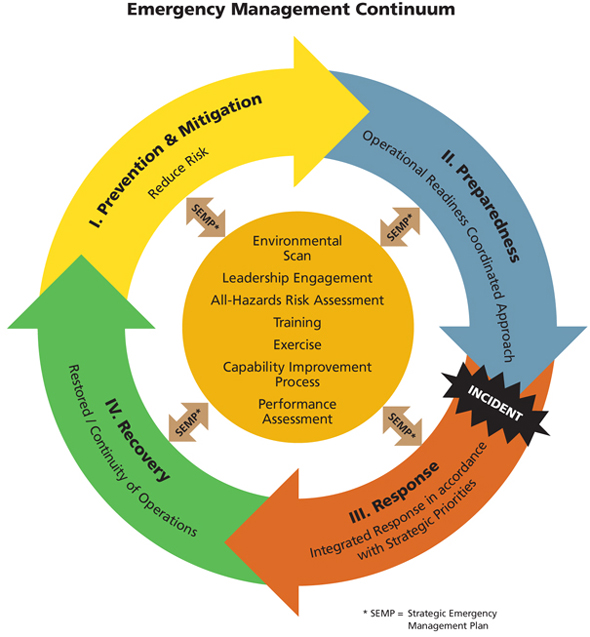Expanding Roles and Responsibilities
Emergency Service Leadership; Emergency service leaders are facing an increasingly complex landscape:
- Crisis management for interconnected emergencies (e.g., natural disasters compounded by public health crises)
- Integration of advanced technologies like artificial intelligence and drones
- Reforming care delivery models to adapt to changing healthcare landscapes
- Addressing cybersecurity threats to critical infrastructure
- Developing resilient communities through proactive planning and education
- Coordinating multi-agency responses to large-scale incidents
- Managing the impacts of climate change on emergency services
Leadership Development and Training
There’s a growing emphasis on comprehensive leadership training:
- Fire Service Executive Development Institute (FSEDI) programs for aspiring fire chiefs
- Seattle Fire Department Executive Leadership Academy (SFD ELA) focusing on team dynamics and organizational culture
- U.S. Fire Administration (USFA) initiatives for continual professional development
- Emphasis on emotional intelligence and adaptive leadership skills
- Integration of scenario-based training to simulate complex emergencies
- Focus on ethical leadership and decision-making under pressure
Technological Integration
Leaders must leverage emerging technologies:
- Artificial intelligence for predictive analytics and resource allocation
- Unmanned aerial vehicles (UAVs) for situational awareness and search operations
- Modernization of data systems for enhanced information sharing and analysis
- Virtual and augmented reality for immersive training experiences
- Internet of Things (IoT) devices for early warning systems and real-time monitoring
- Blockchain for secure and transparent record-keeping
Workforce Challenges and Solutions
Addressing personnel issues is a top priority:
- Developing strategies to attract diverse talent and improve representation
- Creating mentorship programs to support career development
- Implementing flexible work arrangements to improve work-life balance
- Addressing mental health and post-traumatic stress in emergency responders
- Developing succession planning strategies to ensure leadership continuity
- Fostering a culture of continuous learning and professional growth
Interagency Collaboration and Coordination
Enhanced cooperation is crucial:
- Establishing roles like Chief Resilience Officer (CRO) for multidisciplinary initiatives
- Fostering collaboration between federal, state, and local agencies
- Promoting a unified approach within the fire service community
- Developing joint training exercises to improve inter-agency coordination
- Creating shared communication platforms for real-time information exchange
- Establishing mutual aid agreements for resource sharing during large-scale events
Future Directions
To build more effective leadership, the following areas should be prioritized:
- Comprehensive Leadership Training: Develop programs that combine technical skills, strategic thinking, and emotional intelligence.
- Technology Integration and Innovation: Invest in research and development while training leaders to effectively implement new tools.
- Mental Health and Wellness: Prioritize the well-being of emergency service personnel through support programs and stress management strategies.
- Cross-Sector Collaboration: Enhance partnerships between emergency services and other sectors such as public health, environmental agencies, and technology companies.
- Data-Driven Decision Making: Improve data collection, analysis, and sharing capabilities to inform strategic planning and resource allocation.
- Community Engagement: Develop leadership skills in community outreach and education to build resilience and preparedness at the local level.
- Adaptive Leadership: Foster a culture of innovation and flexibility to respond to emerging threats and changing societal needs.
- Ethical Leadership: Emphasize the importance of integrity, transparency, and accountability in decision-making processes.
- Global Perspective: Encourage leaders to learn from international best practices and participate in global emergency management forums.
- Sustainable Practices: Integrate environmental considerations into emergency management strategies and operations.
By focusing on these areas, emergency service leadership can evolve to meet the complex challenges of the future, ensuring more effective, resilient, and responsive emergency management systems.
Peace on your Days
Lance









